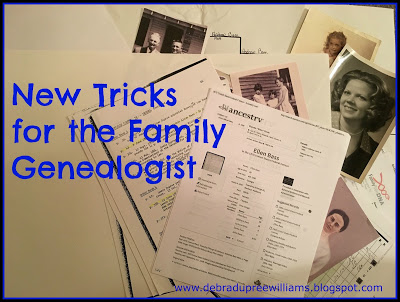New Tricks for the Family Genealogist
I ran across an article in the past couple of weeks about a trick that the pros likely already know. I’ll admit, I didn’t know this one. They called it the most important search trick you’ll ever learn. Well, I can tell you that grabbed my attention . . . big time.
If you’re like me, when you go to a genealogy search site, you probably just go to that main page and insert your info and hope that out of the millions upon millions of records included on that site, the information you supplied will pull up that long-lost, elusive, brick-wall-of-a-challenge relative you’ve been searching for forever.
Did you know that you should be going to individual record collections? The reason? The collections are focused on the specifics. For instance, topic, location, or even a time period. This type of search will also let you use the advanced search prompt to your advantage. This method is particularly useful if the name you are searching has been transcribed incorrectly. Believe me, this is a huge problem. It has happened to me countless times in my own family searches.
Take the time to learn about the collections you are using and how they can be useful in your own searches. Some of the individual collections will have their own search forms. Be sure to take advantage of those as they provide you with more options.
Here’s one I had never seen or thought about. The individual collections let you use the browse-only collections. Browse-only searches aren’t indexed nor are they included in general searches. Who knew? I certainly didn’t.
Here’s another thing I didn’t know. Several of the larger genealogy sites have an online catalog. That catalog will let you see each collection individually. A link should appear on the homepage or in its main menu.
Here are three genealogy sites I visited this week. I tootled around in there and found them easy to maneuver. I started a tree on a couple of them. I already have trees on Ancestry.
FamilySearch has over two thousand collections. Mind you, this is collections, not individual records. That seems like a lot to me.
MyHeritage just announced that they now have a catalog of their collections. You will find over sixty-five hundred collections there.
As I said, I am not a professional genealogist. Most of the records I have gathered in the past twenty years came from doing research the old-fashioned way, going to courthouses, libraries, and cemeteries. I am not that techie a person, so learning to use some of the latest, greatest things won’t be easy for me, but I can learn and so can you.
How about you? Were you aware of this idea of searching collections? Share your genealogy research secrets with us below. And let us know if you try any of these sites and what you think.
TWEETABLE
New Tricks for the Family Genealogist @DDuPree Williams (Click to Tweet)


No Comments